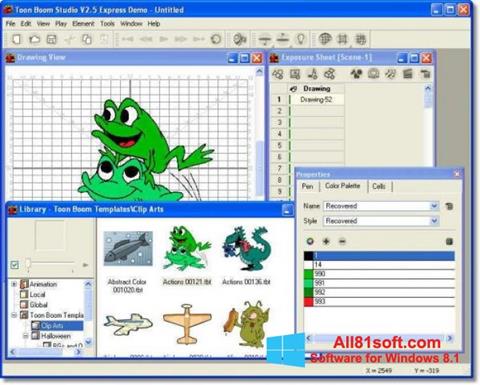
In the Drawing Tools toolbar, select a drawing tool. In the Timeline or Exposure Sheet view, select the cell on the clean layer corresponding to the first key drawing of your rough animation. This is to prevent any accidental changes. In the Timeline view, select your rough layer,Ĭlick the Menu button, and select Lock > Lock. In the Timeline view toolbar, click the Add Drawing Layer button. To trace your animation in a new layer: 1. Light Table feature in order to display all the layers of your project. If you plan on tracing your animation in the Drawing view, you need to turn on the This is the equivalent of adding a sheet of paper and tracing over the rough using the animation disk. You need to add a new drawing layer to draw your clean drawings. This is the final paperless animation step before the ink and paint step. It consists of tracing solid and clean lines over the rough animation to get closed zones. When your rough animation is ready, it is time to clean it up and ink it. In the Timeline or Exposure Sheet view, select a new cell and repeat these steps for the new drawings. In the Exposure Sheet View, select a cell between your two key drawings. In the Camera view, draw your second key drawing. In the Timeline or Exposure Sheet view, select the cell where your next key drawing will appear. In the Onion Skin toolbar, click the Enable Onion Skin button.įrom the Onion Skin toolbar, click the onion skin's Previous or Next drawing buttons and from their drop-downs, select the number of previous and next visible drawings that you think you will need. In the Drawing or Camera view, draw the first key drawing. In the Timeline or Exposure Sheet view, select the cell where the first drawing will appear. It is a good idea to choose a light colour for your rough animation to help for the following task, the clean up process.


In the Drawing Tools toolbar, select the Brush tool or press the Colour view, select the colour you will use to draw. In the Timeline view, create a new drawing layer and name it Rough. If you start animating the details right away, you lose a lot of time if you have to do corrections, and your animation often looks too rigid. The head, arms, and clothes are added later, during the secondary animation.įor a satisfactory animation, complete the main action before adding all the details. For example, to animate a walk-cycle, you will start with the torso moves and the legs. You would usually start with the main action. The first step to complete is the rough animation, which is the skeleton of your animation.


 0 kommentar(er)
0 kommentar(er)
